What does ‘organic’ hair dye really mean? Is there actually such a thing? This post breaks down the harmful chemicals found in most conventional and organic hair dyes in 2024, and what it actually means when you see the label “organic.”

By: Lisa Fennessy
IN THIS POST:
- My experience
- What’s in hair dye?
- Ingredients to consider
- Is organic hair dye cleaner than conventional hair dye?
- Hair dye alternatives
- Organic hair dye FAQ
My experience
For 18 years, I dyed my hair and in 2016, I was dyeing it as frequently as every. four. weeks. I had been okay with dyeing my hair as my one “cheat.” You know, live healthy, buy organic, clean with vinegar and brush with baking soda…all that jazz, BUT my hair? Oh that’s only once a month and this girl needs her hair did, so it was my one exception.
Then, in January 2016, I ditched the conventional dye to try Hairprint, the cleanest hair dye on the block. I used it for 14 months (read my 7 month and 11 month updates for more) and then decided to GO GRAY. Like, totally gray.
What I found was a generous and welcoming community of women who also wanted to learn how to go gray, and share tips about their experience.
But this post is about organic hair dye, not going gray (even though they’re super related).
RELATED: See my entire going gray journey, including Why I stopped dyeing my hair, 3 months, 8 months and one year of gray growth!

What’s actually in hair dye?
Before I went gray, I set out to find the cleanest hair dye that actually works because commercial hair dyes are so toxic that some people have used them to commit suicide; they’re cheap, fast and deadly.
And those deadly chemicals sit on your scalp for 45 minutes making their way to your bloodstream and making pit stops at all of your organs while you sit and read how J. Law connects to Kevin Bacon through six degrees of separation. Straight up criminal.
Obviously we are not choosing to drink our hair dye, so it can’t be too bad right? Well, let’s start with the scalp. The scalp is one of the most absorbent parts of the body—it’s like a sponge that sops up whatever you put on it. As hair dye sits on your scalp, chemicals are absorbed through your skin and into your bloodstream.
Some of these chemical toxins are peed out, but some remain in the body for months, maybe longer.
So why are companies allowed to put harmful toxic chemicals in a box and encourage people to essentially poison themselves?
The ugly truth is no one is really regulating hair dyes. In 1938, The Food, Drug and Cosmetic Act passed, which put an unregulated cosmetics industry under federal regulation. There were two exceptions to this act: soap and hair dye.
This act has remained pretty much untouched which means no one is running the show and to this day, coal-tar dyes do not require FDA certification. Neither the FDA nor any other entity is telling these companies they are not allowed to use certain chemicals and no one is checking to see what is on shelves to make sure products meet certain standards. Chemicals and formulations are like the typical American criminal—innocent until proven guilty.
The self-regulated industry is compounded by the minuscule amount of scientific-based evidence about the effects of hair dye chemicals in the human body because there’s a virtually endless list of variables. A control group and a test group are impossible to isolate and no studies have lasted through entire lifespans.
It’s like when the tobacco companies “proved” that smoking didn’t cause cancer because they set up a three-month study and at the end of it, the subjects did not have lung cancer. (Eye roll.)
And, even when the FDA tries to step in, this happens:
“In 1979, the FDA tried to insist that hair-dye manufactures place the following label on their products: ‘Warning: Contains an ingredient that can penetrate your skin and has been determined to cause cancer in laboratory animals.’ The ingredient referred to is 4-MMPD, 4-methoxy-m-phenylenediamine, a dye with a structure very similar to PPD that, according to the FDA, showed sufficient scientific evidence of being carcinogenic. Manufacturers disagreed and threatened to sue the FDA if they pressed for the label. The FDA backed down. A few years later, manufacturers removed the carcinogenic compound from their formulas, while maintaining the 4-MMPD was safe.” – The Atlantic Magazine
Toxic hair dyes are happening, the government can’t stop it and consumers are perpetuating it because we keep buying and dyeing. So, since the FDA is putting the onus on the consumer to be informed and follow the directions, let’s dive a little deeper together.
RELATED: The best all-natural purple shampoo for gray hair (and more)

Ingredients to consider when buying organic hair dye
What makes hair dye work and can you really have an ORGANIC hair dye?
It’s all about the active ingredients. There are two heavy hitters to consider when you’re reading hair dye labels (but don’t switch tabs YET, because there are more than two ingredients you need to know):
- PPD is a coal-tar derivative which is allergenic, mutagenic and highly toxic. For 125 years, PPD has been the extent of hair dye technology and beauty manufactures have yet to accept a permanent hair-color formula without PPD…
- …or or its related compound, p-aminophenol. To permanently change the color of hair, a product must be able to penetrate the cuticle to deposit or remove color in the cortex and these chemicals do this.
Bottom line, this means that if your organic hair dye is working, it is employing these toxic chemicals (and therefore is not nontoxic).
Companies who sell “organic” hair dyes do use organic ingredients, but those ingredients are just the extra bells and whistles. The industry calls these “fairy dust” ingredients—they have no impact on color or outcome. They’re used to draw the buyer in and let them believe that the product is safer, when in reality these are all inactive ingredients; the product would perform the same with or without them.
But, there are still more ingredients, which make an appearance in conventional and “organic” hair dyes, that we should put under the microscope:
Resorcinol
Resorcinol is obtained from various resins. Irritating to the skin and mucous membranes. May cause allergic reactions particularly to the skin. The FDA issued a notice in 1992 that resorcinol has not been shown to be safe and effective, and the EU requires a warning label on products containing resorcinol.
Also listed as but not limited to: 1,3-BENZENEDIOL; 1,3BENZENEDIOL; 3-HYDROXYPHENOL; CI DEVELOPER 4; M-DIHYDROXYBENZENE; M-HYDROQUINONE; M-PHENYLENEDIOL; OXIDATION BASE 31; RESORCIN; 1,3-BENZENEDIOL; 1,3-DIHYDROXYBENZENE.
Aminophenol
Derived from phenols. Solutions on the skin have produced restlessness and convulsions in humans as well as skin irritations. May also cause rashes, sensitization and inhalation may cause asthma. Mutagenic in lab tests. Metabolized similarly to Tylenol and can effect the liver. Listed as a 5/6 on EWG’s Skin Deep Database.
Also listed as but not limited to: m-AMINOPHENOL, 3-AMINO- PHENOL; 3-AMINOPHENOL; 3-HYDROXYANILINE; 3-HYDROXYBENZENAMINE; CI 76545; M-HYDROXYAMINOBENZENE; M-HYDROXYPHENYLAMINE; PHENOL, 3-AMINO-; PHENOL, 3AMINO; 3-AMINO-1-HYDROXYBENZENE; 3-AMINOPHENOL; p-AMINOPHENOL, 4-AMINO- PHENOL; 4-AMINO-1-HYDROXYBENZENE; 4-AMINOPHENOL; 4-HYDROXYANILINE; 4-HYDROXYBENZENAMINE; 4-HYDROXYPHENYLAMINE; CI 76550; P-AMINO- PHENOL; PHENOL, 4-AMINO-; PHENOL, 4AMINO; PHENOL, P-AMINO-.
Phenols
A disinfectant and anesthetic for the skin. Ingestion of even a small amount may cause nausea, vomiting and circulatory collapse, paralysis, convulsions, coma and green urine. Death from respiratory failure. Fatalities have been reported from ingestion of as little as 1.5 grams. Fatal poisoning can occur through skin absorption. Scores a 7 on EWG’s Skin Deep Database.
Also listed as but not limited to: BENZENOL; CARBOLIC ACID; HYDROXYBENZENE; LIQUID PHENOL; OXYBENZENE; PHENOL,; PHENYL ALCOHOL; ACIDE CARBOLIQUE (FRENCH) ; BENZENOL; CARBOLIC ACID; CARBOLSAURE (GERMAN).
Phenylenediamine (PPD)
May produce eczema, bronchial asthma, gastritis, skin rash and death. Can cross react with many other chemicals including azo dyes used in temporary color. It has caused cancer in some animal experiments. The FDA tried to ban and require labeling for this ingredient in hair dyes but the industry won out citing the Food, Drug and Cosmetics Act of 1938 exempting hair dye from the FDA’s jurisdiction. Banned from cosmetic use in EU and Canada. Listed as a 7/8 on EWG’s Skin Deep Database.
Also listed as but not limited to: m-PHENYLENEDIAMINE, 1,3-BENZENEDIAMINE; 1,3-DIAMINOBENZENE; 1,3-PHENYLENEDIAMINE; 1,3BENZENEDIAMINE, DIHYDROCHLORIDE; CI 76025; DEVELOPER 11; M-AMINOANILINE; 1,3-BENZENEDIAMINE HYDROCHLORIDE; 1,3-DIAMINOBENZENE DIHYDROCHLORIDE; 1,3-PHENYLENEDIAMINE DIHYDROCHLORIDE; 3-AMINOANILINE DIHYDROCHLORIDE; p-PHENYLENEDIAMINE, 1,4-BENZENEDIAMINE; 1,4-PHENYLENEDIAMINE; 1,4BENZENEDIAMINE; CI 76060; OXIDATION BASE 10; P-AMINOANILINE; P-DIAMINOBENZENE; 1,4-BENZENEDIAMINE (9CI) ; 1,4-DIAMINOBENZENE; 1,4-PHENYLENEDIAMINE; 4-AMINOANILINE.
1-Naphthol
Used as an antiseptic. Causes severe eye and skin irritation. Toxic by ingestion and skin absorption. When applied to the skin in hair dyes, it is not teratogenic or carcinogenic. Listed as a 7/8 on EWG’s Skin Deep Database.
Also listed as but not limited to: 1-HYDROXYNAPHTHALENE; 1-HYDROXYNAPTHALENE; 1-NAPHTHALENOL; 1-NAPHTHYL ALCOHOL; 1NAPHTHALENOL; ALPHA-NAPHTHOL; CI 76605; OXIDATION BASE 33; 1-HYDROXYNAPHTHALENE; 1-NAPHTHALENOL; ALPHA-HYDROXYNAPHTHALENE.
Ethanolamines
Strong bases. Used as a substitute for ammonia. Very large quantities are required for lethal oral doses in mice. Rates a 5/6 on the EWG’s Skin Deep Database.
Also listed as but not limited to: 2-AMINO- ETHANOL; 2-AMINOETHANOL; 2-HYDROXYETHYLAMINE; ETHANOL, 2-AMINO-; ETHANOL, 2AMINO; MEA; MONOETHANOLAMINE; 2-AMINOAETHANOL (GERMAN) ; 2-AMINOETANOLO (ITALIAN) ; 2-AMINOETHANOL (OSHA) ; 2-HYDROXYETHYLAMINE.
Coal Tar
This ingredient causes cancer in animals. Not recommended for use in any product that sits on the skin for over 20 minutes. Contains many constituents including benzene, xylenes, naphthalene, pyridine, quinoline, phenol and creosol. Rates a 10 on EWG’s Skin Deep Database as a known carcinogen.
Also listed as but not limited to: COAL TAR SOLUTION; TAR, COAL; CARBO-CORT; COAL TAR SOLUTION USP; COAL TAR, AEROSOL; CRUDE COAL TAR; ESTAR (SKIN TREATMENT) ; IMPERVOTAR; KC 261; LAVATAR; PICIS CARBONIS.
Also, here is a list of 22 hair dye chemicals banned by the EU:
- 6-Methoxy-2,3-Pyridinediamine and its HCl salt
- 2,3-Naphthalenediol
- 2,4-Diaminodiphenylamine
- 2,6-Bis(2-Hydroxyethoxy)-3,5-Pyridinediamine
- 2-Methoxymethyl-p-Aminophenol
- 4,5-Diamino-1-Methylpyrazole and its HCl salt
- 4,5-Diamino-1-((4-Chlorophenyl)Methyl)-1H-Pyrazole Sulfate
- 4-Chloro-2-Aminophenol
- 4-Hydroxyindole
- 4-Methoxytoluene-2,5-Diamine and its HCl salt
- 5-Amino-4-Fluoro-2-Methylphenol Sulfate
- N,N-Diethyl-m-Aminophenol
- N,N-Dimethyl-2,6-Pyridinediamine and its HCl salt
- N-Cyclopentyl-m-Aminophenol
- N-(2-Methoxyethyl)-p-phenylenediamine and its HCl salt
- 2,4-Diamino-5-methylphenetol and its HCl salt
- 1,7-Naphthalenediol
- 3,4-Diaminobenzoic acid
- 2-Aminomethyl-p-aminophenol and its HCl salt
- Solvent Red 1 (CI 12150)
- Acid Orange 24 (CI 20170)
- Acid Red 73 (CI 27290)
RELATED: What ingredients does TNK always say “no thanks” to? Check these out.
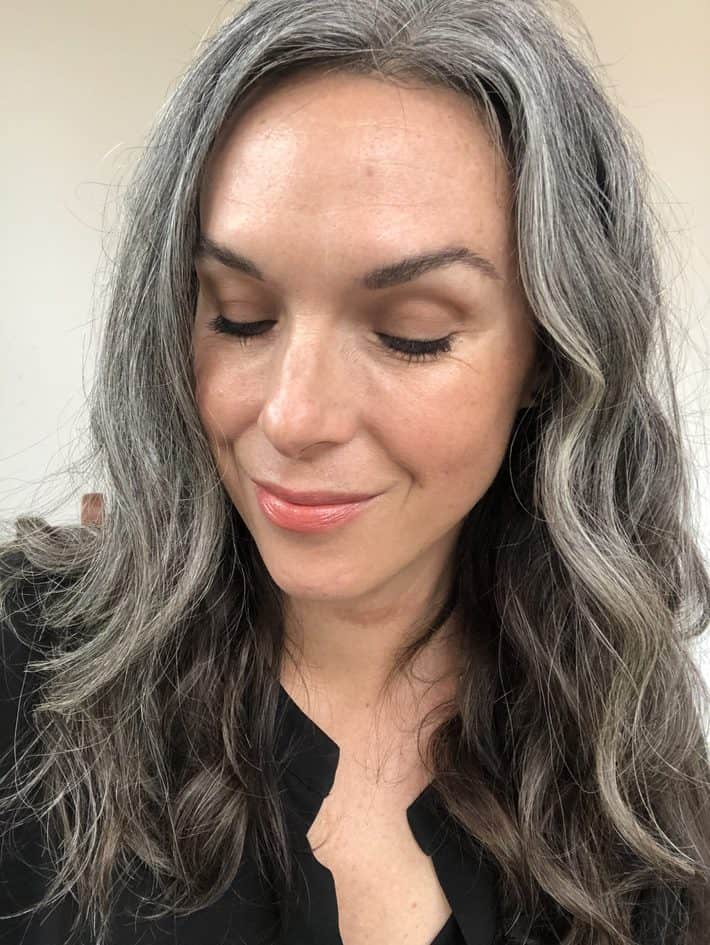
Is “organic” hair dye cleaner than conventional hair dye?
Where do we go from here? First, let me say this is totally an individual decision and everyone has the right to color their hair without being judged. This is a super hard decision to make for some, myself included, because the outcome is so visual. Our goal is for you to be informed of all the information, so you can make the best decision FOR YOU. Full stop.
The tipping point here is education and understanding the difference between marketing lingo vs. what’s actually in products.
It’s what the company is NOT saying—that’s what buyers really need to know.
For example, some companies will boast that their product is “ammonia free” or “PPD free.” First of all, ammonia is an archaic ingredient. It is still used, but it’s not a staple ingredient like it used to be. Parallel to buying chicken, when the label says “hormone free”—hormones are not used in chicken anyway.
It’s like saying there is no steak in your ice cream…yeah we know!
So, what are they using to replace ammonia? Is it ingredients like ethanolamine and triethanolamine? And are they also using chemicals like PTD (para-toluene diamine) or p-aminophenol as a substitute for PPD? If the answers are yes and yes, these formulas could be just as questionable as “conventional” hair dyes.
“It’s probably true that if these materials (PPD and PTD) were invented today, their use in cosmetics would not be permitted but they remain in use…as no effective replacements have been found.”
Royal Society of Chemistry
I’m not here to convince you to dye your hair or not. That’s is 100% up to you and to feel good about it either way. The one point that I really want to drive home here is when a hair dye is labeled “organic” or claims to be “natural,” don’t be fooled into thinking you are getting a “healthy” alternative. I hear so many people say, “I know it’s not perfect, but at least it is a little better.”
It’s not really. It’s all the same active ingredients, just boxed and labeled differently.
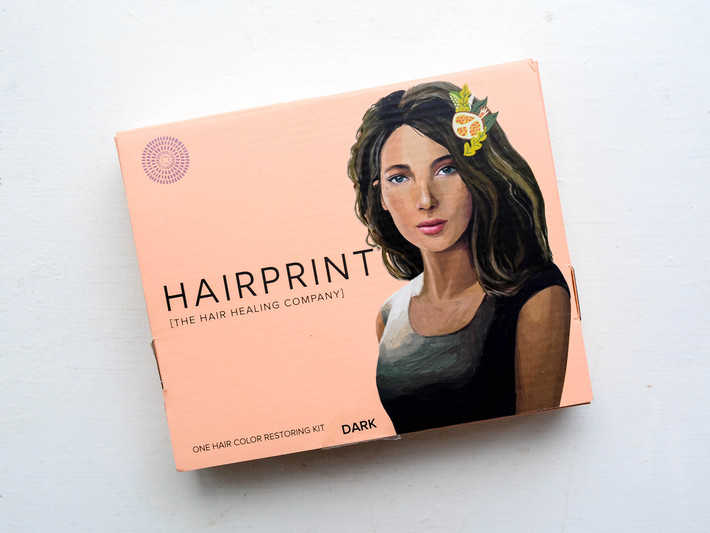
Other hair dye alternatives
What are some other options? Well there are a couple. Supplements, henna and HairPrint, to name a few.
I’m usually game for trying organics and natural alternatives, but the more I looked into henna, the more I was seeing things like, leave it on for 4-5 hours or OVERNIGHT (the ingredients look fabulous but lets be honest, overnight?! No thanks). Many reviewers said the color outcome was unpredictable and it didn’t last. Ruth Winter, author of A Consumers Dictionary of Cosmetic Ingredients says, “They are more difficult to apply, less reliable than manufactured dyes, and less predictable as far as color is concerned.” The reason for this is henna dyes only coat the hair temporarily; they don’t alter the hair like permanent dyes.
Or maybe supplements? Some of my readers mentioned diatomaceous earth, Brahmi Amla or another herbal remedy like He Shou Wu. While these may work, I’m personally a fan of less when it comes to supplements. I am a fan of instant gratification, though my going gray journey was NOT instantaneous (still, so worth it).
HairPrint was the closest I came to finding the golden ticket of organic hair dye. And even after that great experience, I chose to embrace my gray.
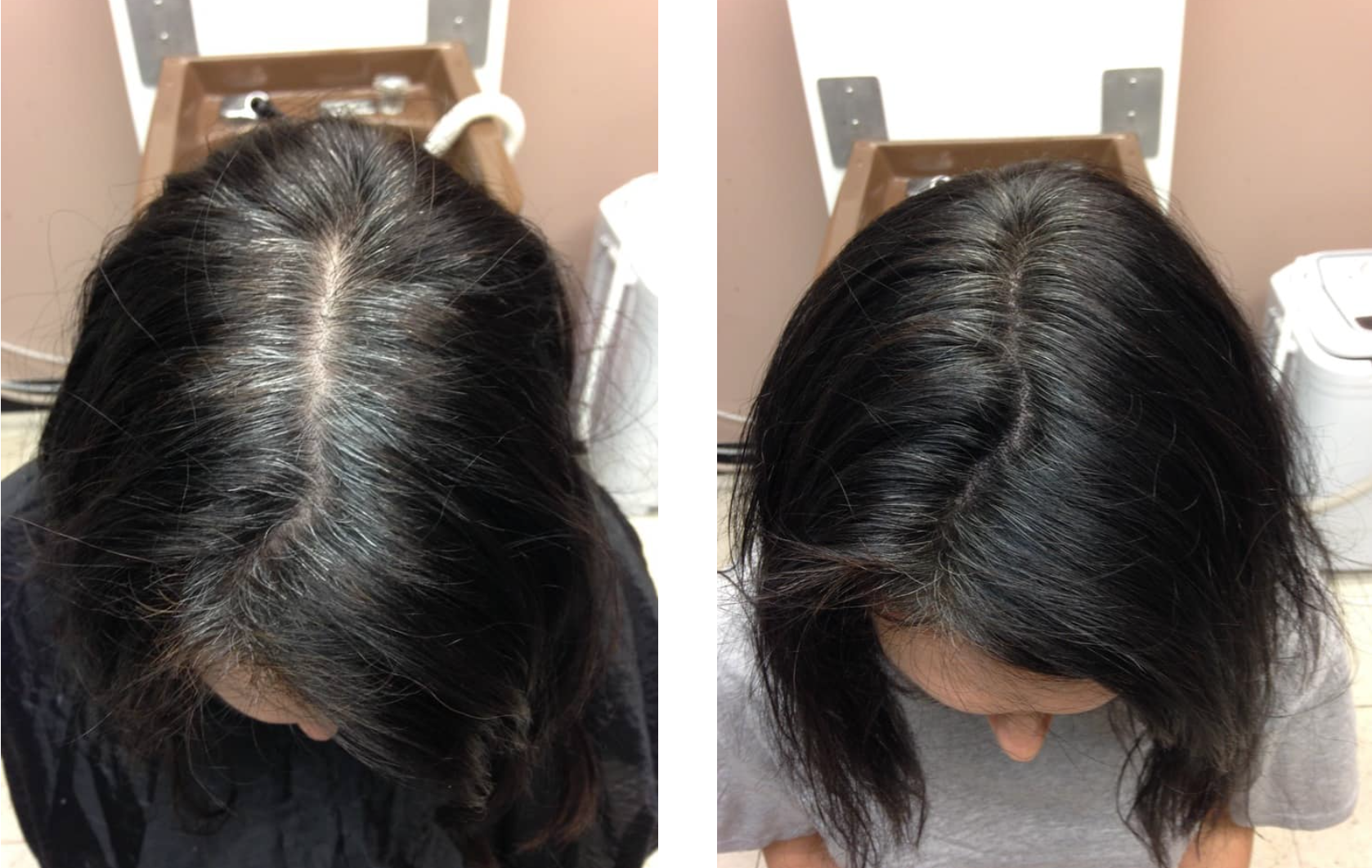
Organic hair dye FAQ
It’s not really. It’s all the same active ingredients as conventional dye, just boxed and labeled differently. Read my full study on organic hair dyes here.
HairPrint was the closest I came to finding the golden ticket of organic hair dye. Other things to try are supplements like He Shou Wu, and henna hair tints.
Organic and natural hair dye alternatives are the safest ones based on the ingredient list. We’ve found HairPrint, a dye alternative, to be the best for coloring hair.
It’s not really. It’s all the same active ingredients as conventional dye, just boxed and labeled differently. Read my full study on organic hair dyes here.
What’s your take on organic hair dye?
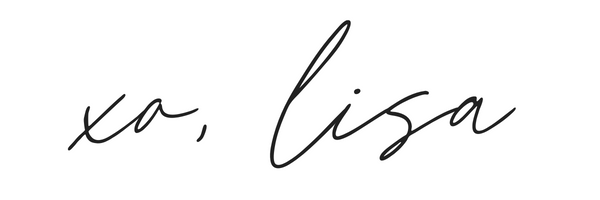
*This ingredient information was referenced from “A Consumer’s Dictionary of Cosmetic Ingredients,” by Ruth Winter, M.S. unless otherwise stated.

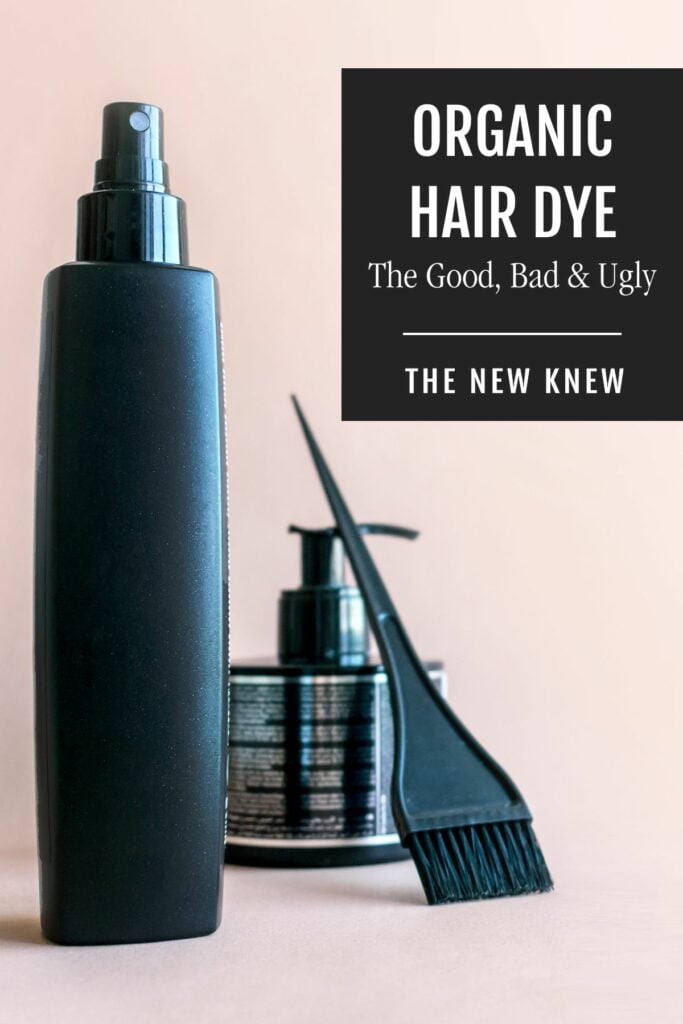
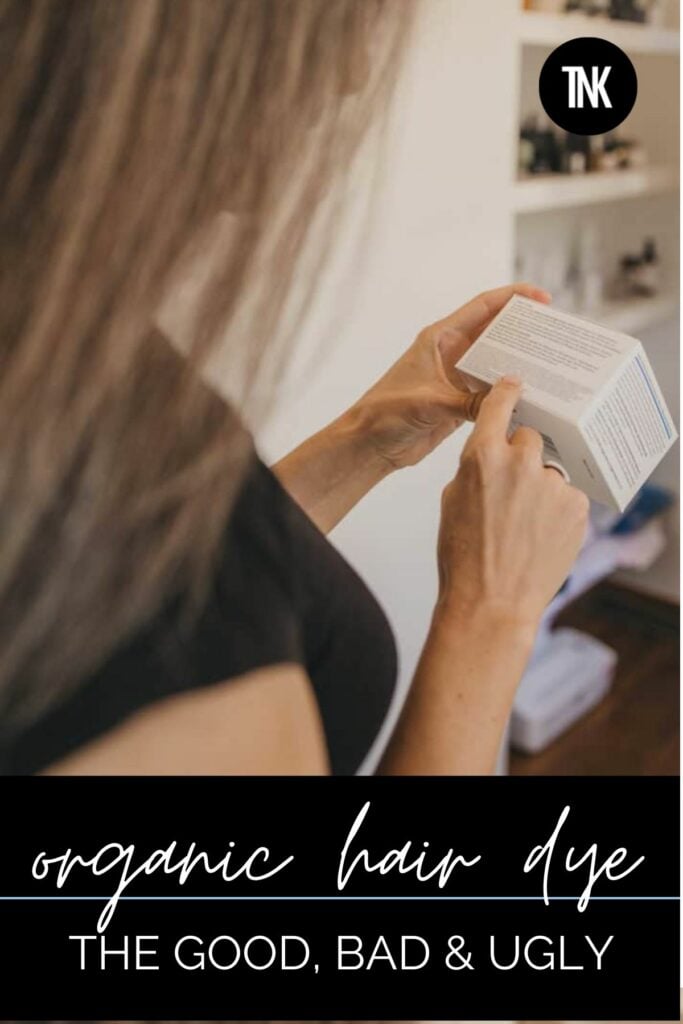
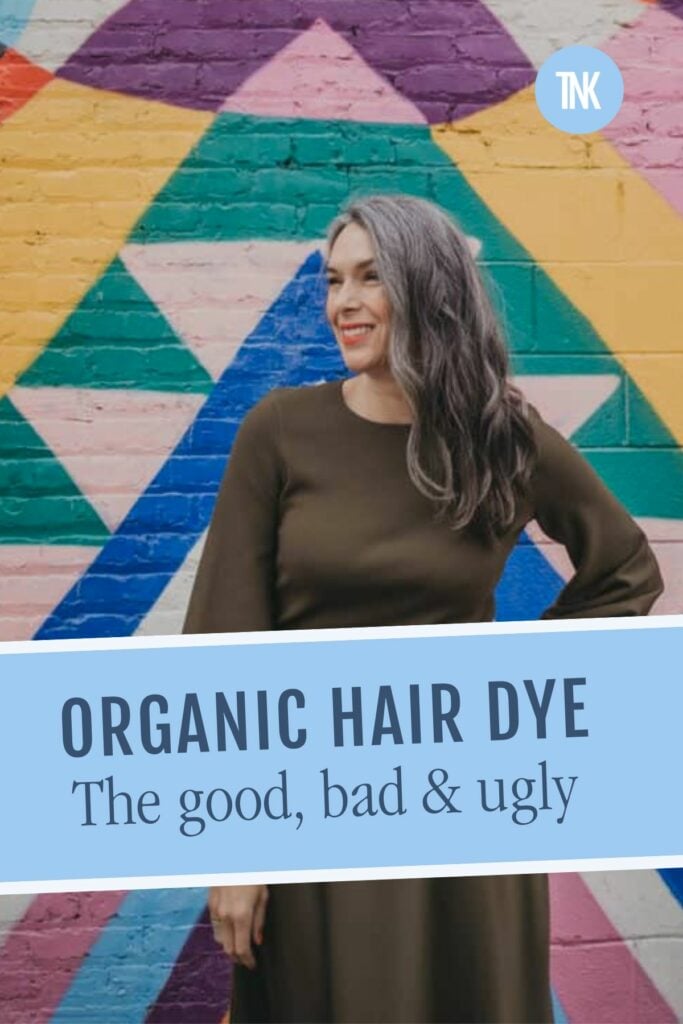
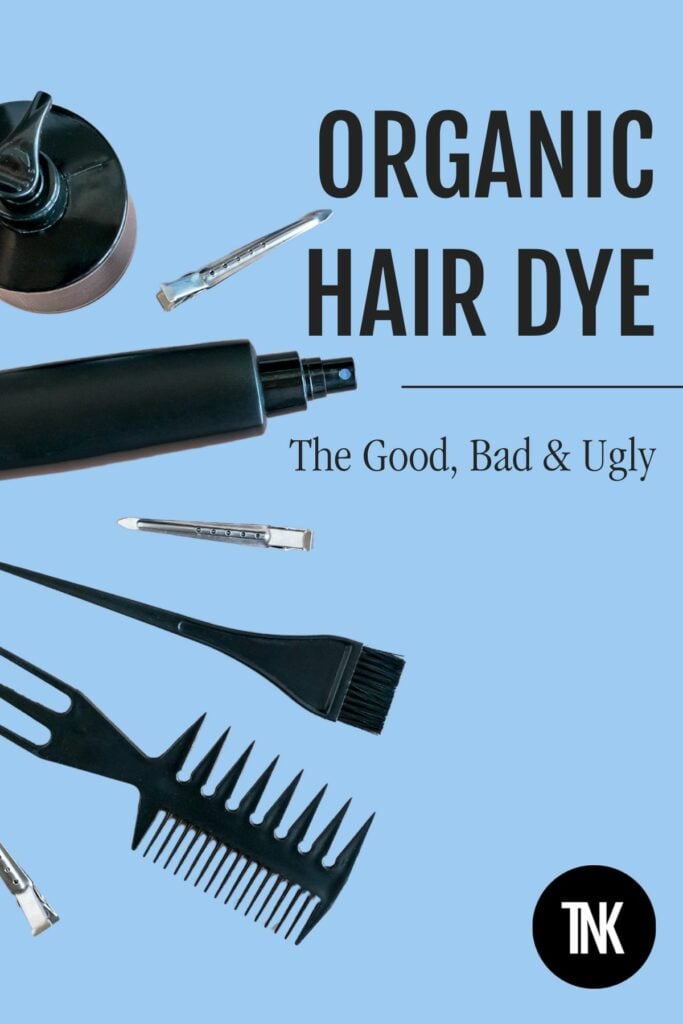
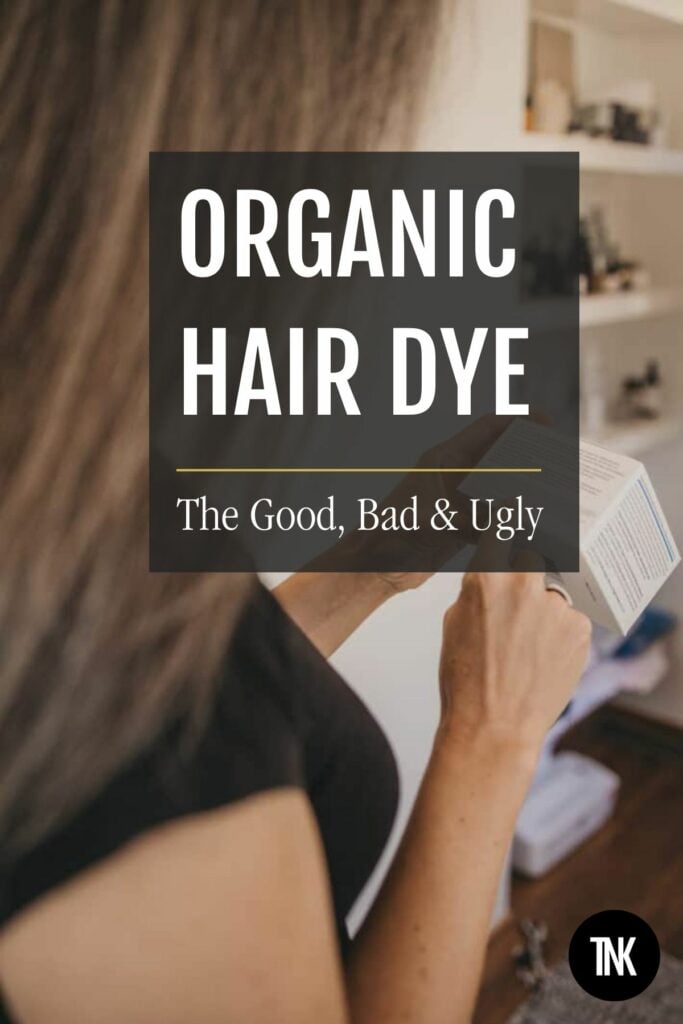
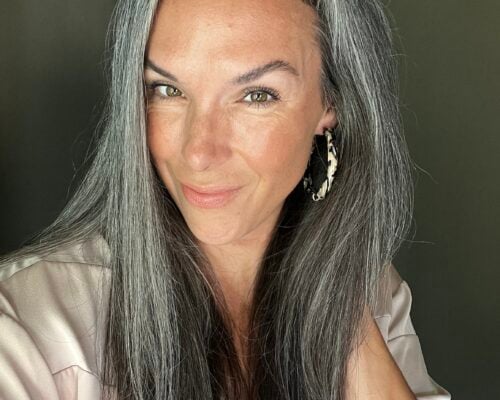
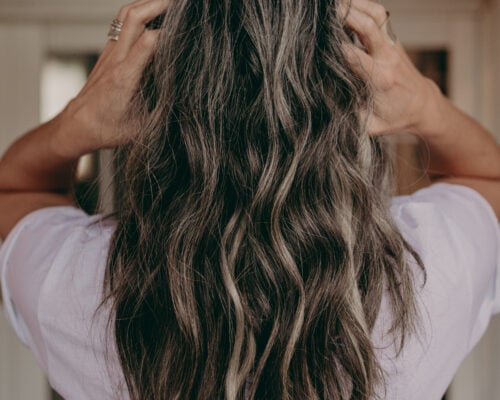
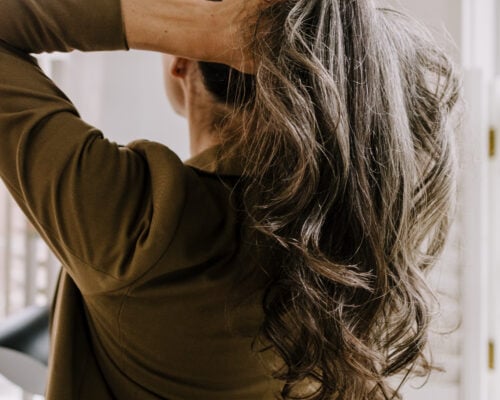
Sue Williams
January 24, 2016This is so depressing. Thanks for spelling everything out so beautifully. I’d LOVE to let myself go all gray – IF I knew I’d have a head full of beautiful gray. It’s all or nothing for me, and since I don’t know…
Surya liquid henna is nice but it only lasts a few days to a few short weeks to cover grays. I’ve just recently heard of HairPrint so I can’t wait to read how you do with it!
Lisa Fennessy
January 24, 2016Thanks for reading Sue! That’s how I feel too! I wish my hair was either all brown or all white, this in between stage is so hard! Thanks for sharing your experience with henna. Stay tuned for HairPrint!
Natalia
January 24, 2016I really enjoyed reading this. As a former hairdresser myself, I completely agree with what you share in regards to toxicity. Being a green beauty advocate now I know how frustrating it can be to actually find a truly clean brand. The only brand that I had come across that slightly had made some effort to be less toxic was Colure and Naturigin, but again not completely free of the nasties.
I’m super excited to learn about the print process you mentioned, sounds promising.
I’m glad that I have found another organic mom like yourself and Suzi of gurlfonegreen to learn from and have a supportive community.
Keep it up!
Lisa Fennessy
January 25, 2016Thanks so much Natalia! I really appreciate your comments! Next time you are near a box of Colure and Naturigin check the box! See if any of these ingredients are listed, I bet they are! But if they are not, I want to be the first to know! Thanks for reading and stay tuned for my HairPrint review! It should be up in a month or so!
Natalia
August 18, 2016*just to clarify, I’m a different Natalia (not the one from the original message).
got an email back from COLURE, here are the ingredients.
COLURE True Performance Ingredient List:
Organic Condition Base – made with certified organic, naturally grown and naturally derived ingredients:
Distilled Water, Certified Organic Aloe Barbadensis Leaf Juice, Cetyl Alcohol (and) Stearyl Alcohol
(and) PPG-5 Ceteth-20 (and)Dicetyl Phosphate (and) Ceteth-10 Phosphate (and) Behentrimonium
Methosulfate, Oleic Acid, Oleyl Alcohol, Oleth-5 Phosphate (and) Dioleyl Phosphate,
PPG-2 Hydroxyethyl Cocamide, Sodium Lauroyl Sarcosinate, Cetearyl Alcohol,
Hydrolyzed Wheat Protein PG-Propyl Silanetriol, Organic Bertholetia Exceisa Seed Oil, Organic Theobroma
Grandiflorum Seed Oil, Organic Caryocar Brasiliense, Organic Lavender oil, Organic mango extract, Organic citrus oil, Acetamide MEA,
Erythorbic Acid, EDTA.
Alkaline Agent: Ethanolamine – pH 9.0
Hair Dyes:
m-Aminophenol, p-Aminophenol,
2-Methylresorcinol, 4-Amino-2-HydroxyToluene,
2,4-Diaminophenoxyethanol Sulfate, Toluene-2,5-Diamine Sulfate.
Lisa Fennessy
August 19, 2016It’s all in the labels! Thanks for posting this!!!
Natalia
August 18, 2016the Vitamin Shoppe has all ingredients listed for Naturigin.
Here’s a list of ingredients for “brown”, looks like it has PPD and m-Aminophenol ;((
COLOUR CREAM/FRGKRM/VRIVOIDE: aqua/water, sodium coco-sulfate, ethanolamine, myristyl alcohol, cocamidemipa, cocamide mea, cetearyl alcohol, cocamidopropyl betaine, oleth-20, propylene glycol, tetrasodium edta, sodiumsulfite, p-phenylenediamine, 4-chlororesorcinol, parfum/ fragrance, triticum vulgare bran extract, simmondsia chinensis(jojoba) seed oil, m-aminophenol, ascorbic acid, erythorbic acid, ethoxydiglycol, vitis vinifera seed oil, butyrospermumparkii (shea tree) butter extract, 2-amino-4-hydroxyethylaminoanisole sulfate, aloe barbadensisleaf extract, 2-methylresorcinol, 4-amino-2-hydroxytoluene, toluene-2,5-diamine sulfate, hydrolyzed soyprotein, prunus persica kernel oil, prunus armeniaca kernel oil, citrus medica limonum (lemon) peel extract*,citrus grandis (grape fruit) peel oil, citrus aurantium dulcis (orange) peel oil*ACTIVATOR/AKTIVATOR/AKTIVAATTORI: aqua/water, hydrogen peroxide, cetearyl alcohol, paraffinumliquidum (mineral oil), peg-20 hydrogenated lanolin, lanolin alcohol, ceteareth-20,glycerin, phosphoric acid, tetrasodium edta, disodium pyrophosphate, tetrasodium pyrophosphate,etidronic acid, sodium stannate, oxyquinoline sulfate
therese
January 25, 2016I’m thinking of trying “Hairprint”, what is your result? Thanks.
Lisa Fennessy
January 25, 2016Hi! Thanks for your comment! I am trying HairPrint now and am currently working on a review! Stay tuned and I hope to have all the deets up with in a few weeks!
Nicole flammi
January 30, 2016Ok I literally just dyed my hair today for the first time in 15+ years. Ummmm ! Now I’m freaking!!
Lisa Fennessy
January 30, 2016Girl, if you did just roots or an overall color to hide the grays – I may have a solution, stay tuned! If you are doing highlights and it is not touching the scalp that is a different story too. Don’t freak out, awareness is essential to living a healthier lifestyle and that is the hardest part – reading articles like this, following your curiosity and having an open mind is half the battle, you are doing a good job! (ps, love you Nik!)
Abbey
February 1, 2016Hey, great blog! I just started following you via our IG connection, and I’m loving what I’m seeing! Looking forward to seeing more posts.
-thewildholistic
Lisa Fennessy
February 2, 2016Thanks so much Abbey! Sweet comment, I really appreciate the love!
penelope
February 3, 2016This is one of the best articles I’ve ever read on beauty health. Thank you for researching and posting. Thank you for also sharing about Hairprint. I am glad they are out there doing something about it!
Lisa Fennessy
February 4, 2016Thanks so much! I am so passionate about this topic and put a lot of time into it and I really appreciate the feedback – so glad it reached you!
T
February 13, 2016Hairprint did not work for me. I naturally have dark brown hair with slight reddish highlights. I have the same issues as you… Started going gray at 19… Even had a white hair at five. I know 42 and have white roots with dyed black hair. I had been dying my hair weekly because I have very fast root regrowth until allergic reaction a few weeks ago. I was so excited to try hairprint but after three tries over three weeks all I have is a slight dirty blonde dingy green hue covering my white. It essentially looks like semi permanent dye that did not take. I have now spent $172 and I’m very frustrated as I spent much time and effort putting on this very messy treatment and going back-and-forth the email with the company as they were trying to troubleshoot with me. I did all of their extra recommendations and despite that did not get the results that they are advertising. Instead, my hair was being blamed for being nonporous…i’m not too happy about that because all hairdressers have said my hair sucks up die and is very porous and I don’t want to be blamed for a product frankly that has not worked. I have read other reviews of people stating the same thing. For whoever it has worked for I have no idea how they did it and I certainly wish that was me. I really really wanted this to work but I didn’t. Now I want a full refund and hope the company will do the right thing. I believe the concept is great but requires further research.. Because dishwater dingy color is NOT my natural color. As the author of this blog, I truly want to know if this works for you. And if not, I want to know if you find something that is as natural as possible in the future. I am desperate to find a solution and I’m very frustrated. If I did not have white hair I would ditch the dye in two seconds
Lisa Fennessy
February 14, 2016Thanks so much for your comment. I totally understand your frustration. I am still in the process of trying HairPrint and I am currently preparing to provide my readers with a full review. There are many women who strive to live a nontoxic lifestyle but are stuck in hair dye purgatory – forced to choose between gray/white hair or toxin exposure through chemical hair dyes. I am excited to find a solution. Please stay tuned!
Alli
February 20, 2016Love this article!! I laughed and cried;) So excited to see this blog starting; can’t wait to see more!!
Lisa Fennessy
February 21, 2016You are the sweetest Ali! Thank you!
Tami Cockrell
April 4, 2016How were your results? I have been full head dying my hair for last 10 years. Primarily with over the counter brands of hair dye. I had been highlighting it for 20years before that. My question is, do I need to let my gray show before hair print will work? I’m not sure I want to go gray first. I am more than 90% gray at 50.
Lisa Fennessy
April 5, 2016Hi Tami! I am so glad you are making the switch away from toxic chemicals! You do not have to wait to color with Hairprint. You can apply weather you have a 1/4 inch of gray showing or 2 inches or a whole head. Hairprint color will take better to hair that has never been chemically dyed. However you can start right away and it will treat whatever grays you have currently.
Cheryl
July 28, 2016I think a lot of brands out there are taking advantage of the term natural and organic. I used to have a ton of respect for Aveda pushing towards becoming healthier until they got purchased by Estee Lauder in 2007. They initially where telling people they are going to be operated entirely separate, which it seems not to be entirely true. They went after profits after slowly replacing their ingredients with synthetics that made the products work better. The problem with that is they have become less and less natural and now focus of eco-friendly. I have purchased O Way products online from store.revivesalonsf.com as the lady who works there explained O Way is not 100% natural…yet. She said as a stylist, the formulas for the colors and products do change every few months, whenever they seem to find a suitable replacement for any artificial ingredients. My personal belief is that any company that will publicly admit they are trying to be better, give them the time of day.
Lisa Fennessy
July 28, 2016Thanks so much for your comment Cheryl and I commend you for taking a deeper dive into brand’s ingredients. I have used and researched both of these brands and they are both employing the same toxic active ingredients that I listed in my article. I wish they were more transparent about what the ingredients ARE instead of what their brand does not use. That’s another tactic that is super deceptive.
Aayush Shastri
September 20, 2016This generation has had a serious problem of getting grey hair at an early age and it is just increasing. All of this happens because of our lifestyle, eating habits, stress and chemicals in the products we use. Getting your hair dyed is not healthy for your hair and since I am going through the same problem of having grey hair so early I decided to find a safe and healthy solution. I came across Kama Ayurveda’s organic henna powder and indigo powder and this combination has saved me! It is the organic way to go and dyes your hair black, I have been using these products for several months now and am so happy. Everyone who is having this same problem, I highly recommend to use such products rather than hair dye.
http://www.posherry.com/blog/kama-ayurveda-solves-white-hair-problems/
Lisa Fennessy
September 20, 2016Thanks for the recommendation! Glad it is working for you!
Lisa
February 22, 2017I tried Hair Print and it did not work for me. I purchased a second kit and still did not work. I am contemplating on trying it a third time, but it is getting costly. They tell you not to use any hair products and even the natural ones that I use are supposed to hinder the results. Did you try it? I want it to work for me.
Lisa Fennessy
February 23, 2017YES! I’ve been using it exclusively for over a year now! I have a ton of tips and before and after pics here on my blog. Search “Hairprint” and they will come up! Let me know if you have questions after that!
kara
March 21, 2017Hi, I am constantly researching ingredients for everything and it can be seriously excruciating to get some companies to give up their formulas. Elizabeth Arden was one of the worst, and I never did get any ingredients. Anyway, I had a reaction to PPD in a semi-permanent dye a couple of years ago. Thank God mine was minor in comparison to those whom have died or been hospitalized, but it is a lifelong battle now against cross-sensitizations because of the PPD reaction. I am not a sales rep or anything for the following company, I am simply a consumer and like to share with others (I do have a youtube channel Kara Elizabeth where I intend to fully disclose my experience with PPD at some point). I discovered this henna company after researching for a couple of years not wanting to go gray at 43, although I would have if I had not found them. They are Mehandi.com and the head woman there is Catherine Cartwright. Let me tell you, she knows her stuff. Mehandi, or Ancient Sunrise, lab tests every batch of their henna for purity because many henna companies abuse the term all natural. They are far from all natural. Not all hennas are alike and Mehandi is the ONLY one I will use. I have been using it for two years now and I love it. Yes, I have to mix it and leave it on for about three and a half hours, but I do things during that wait time so it is hardly an inconvenience. As far as color goes, there is a huge variety and once you have your recipe down, it is a breeze and really consistent. I use two henna colors to create a dark brunette tone with auburn highlights. Simple and beautiful. Please contact them if you have any questions or would like to discuss your color options with one of their very knowledgeable employees. You can join their Facebook page as well for Ancient Sunrise. Hope this helps someone else!! Thanks for reading.
caz
March 26, 2017I have dyed my hair for ten yeas, at the roots, med brown. I am very health conscious, and thought I would go to an Aveda salon, which as you wrote, make it seem like you are getting a plant based colour.
First time, I got the itchiest scalp. Second time, my head broke out in crusty oozy welts, then my body got itchy red hives, and totally swollen glands. NOT what you expect. It is horrible how they make you believe it is organic and good for you…it is WORSE. I never had a reaction in my life. They still have PPD. Aveda do not want to know what happens, either. So just letting all you lovelies know….they are TOXIC as well.
Lisa Fennessy
March 26, 2017So sorry that happened to you! Thank you so much for sharing and yes thats called GREENWASHING – when companies say a product is nontoxic or they lead you to believe through tricky labeling that it is safe and its not. Hope you are feeling better!
Maria
April 3, 2017Anyone know anything about the ones listed in this article?
http://eluxemagazine.com/beauty/10-of-the-best-natural-hair-dyes/
Sandy
April 22, 2017I’m blonde but age has given me a dirty blonde sprinkled with gray. My hairdresser highlights my hair with bleach that he says is less harsh. I walk out with what looks like several shades of blonde and the gray that remains is barely visible! So now I wonder, how toxic is “less harsh” bleach? I will ask him to let me see the label! He has always joked “better hair through chemicals”. But maybe not better life!!
Lisa Fennessy
April 23, 2017I totally hear you Sandy and I am all about educating yourself, reading labels and making informed decisions about what you choose to put on your body. Don’t let someone decide for you. No one will have your best interest in mind more than you. Let us know what you find out! xo
Lori babb
April 25, 2017If I had a dime for every blogger who thought they had as much knowledge as a professional I would be rich. It is true that there is no permanent hair color available that is 100% organic/ natural. It’s not possible. It’s also true that one company listed is known for green washing. I know for a fact that at least one company listed clearly states they are not completely organic and freely releases their ingredient list.
What you have not listed is percentage of said ingredients. Not all colors are made the same and trying to group them together or group them with a non “natural ” professional hair color is completely inaccurate. When a professional company claims a higher percentage of organic ingredients and the smallest percentage of toxic ingredients then other professional brands then you should investigate that claim. Not “blog bashing” with watered down claims. Also, some of the ingredients you listed can be derived from different sources. Example: there are two different kinds of MEA. One is derived from coconut. Did you know that? Probably not.
I’m not suggesting that you not read labels. Absolutely read labels. I would also suggest doing a little more research about industry ingredients you know little about.
Truth: all permanent hair color will have some chemicals or it won’t work.
Truth: there are professional products who minimize the amount as much as possible.
Truth: they aren’t even close to the level of toxicity in “regular ” professional or box color.
I don’t care if you color your hair or don’t. You do you. Personally, I applaud being the truest form of you. Grey hair and all.
Ps… darker shades of hair color do have different percentages and/or ingredients then lighter shades so, ya know, not a stall tactic. Does vanilla cupcakes have different ingredients then chocolate cupcakes? Right. Kinda like that.
Penny
April 27, 2017Thanks for this article-I have been using Naturcolor for many years now thinking that at least most of the list looked good compared to other companies but am now VERY disheartened.Wondering if you have discovered anything new since this article was written-any feedback would be greatly appreciated-not ready to go grey just yet,
thanks
Tonya Lee Wise
April 27, 2017I’m a professional and I agree with Lori Babb; if it ain’t 100%henna, it ain’t all natural. However, percentages of ingredients in a FORMULA varies greatly from the toxicity of a substance in its purest form. Anyone committed to completely “clean” living needs to plant their own garden and live off of it. Haircolor is not a natural product. However, at least one company listed has formulated an amazing innovative color that minimizes the necessary pigments and maximizing active holistically medicinal ingredients that are scientifically proven to be anti allergen, any inflammatory, and anti bacterial.
In fact, I cross referenced NIH !
“Green bashing” companies trying to better our industry is just as much a frustration as greenwashing by some companies.
Chrissy
May 6, 2017Tonya Lee Wise what is the one company you were referring to?
Courtney C.
July 16, 2017Tonya, cam you please provide this information to us – what company are you referring to? It would be so helpful to those of us searching for the best possible choice. Thanks so much!
Kay
May 5, 2017Thoroughly enjoyed reading your post. Very informational. As a hairstylist, I’ve always known there are certain chemicals in hair dyes that can affect us and the consumer. However, for a while I did not realize what ingredients and to what extent. I now work for Madison Reed and I’ve been doing a lot of research for ingredients in this color and products line vs others and how they affect us (hence I found you). I wanted to share that Madison Reed does not carry all of the ingredients you mention. For example, Madison Reed does not have coal tar, resorcinol, SLS, parfum ,or phenols. It does have ethanolamine, p-Aminophenol, 1-Naphthol. Ethanolamine is used as a PH Adjuster, p-Aminophenol and 1-Naphthol are used as the actual hair dye. As you mentioned, EU does have a ban and a better filter for toxic ingredients than the US (which is appalling!) and is the reason why Madison Reed chose to create their color in the EU and abide by their standards. Some of the ingredients in hair dye are not only bad for us (the consumer) but the applier (stylist) and the environment (everyone). Scary really. All of the research I’ve done kindly directs me to appreciating Madison Reed and the quality of the color line even more so I thought I’d share as a better alternative to other color lines and for you to take a double look for a second chance 🙂 Per your article, I will also ask about the 3 ingredients that in the formula and what alternatives we could take in order to have even betttter quality.
XO
Lisa Fennessy
May 5, 2017Thanks so much Kay! I really appreciate you comment and consideration. Thank you so much for this! xo